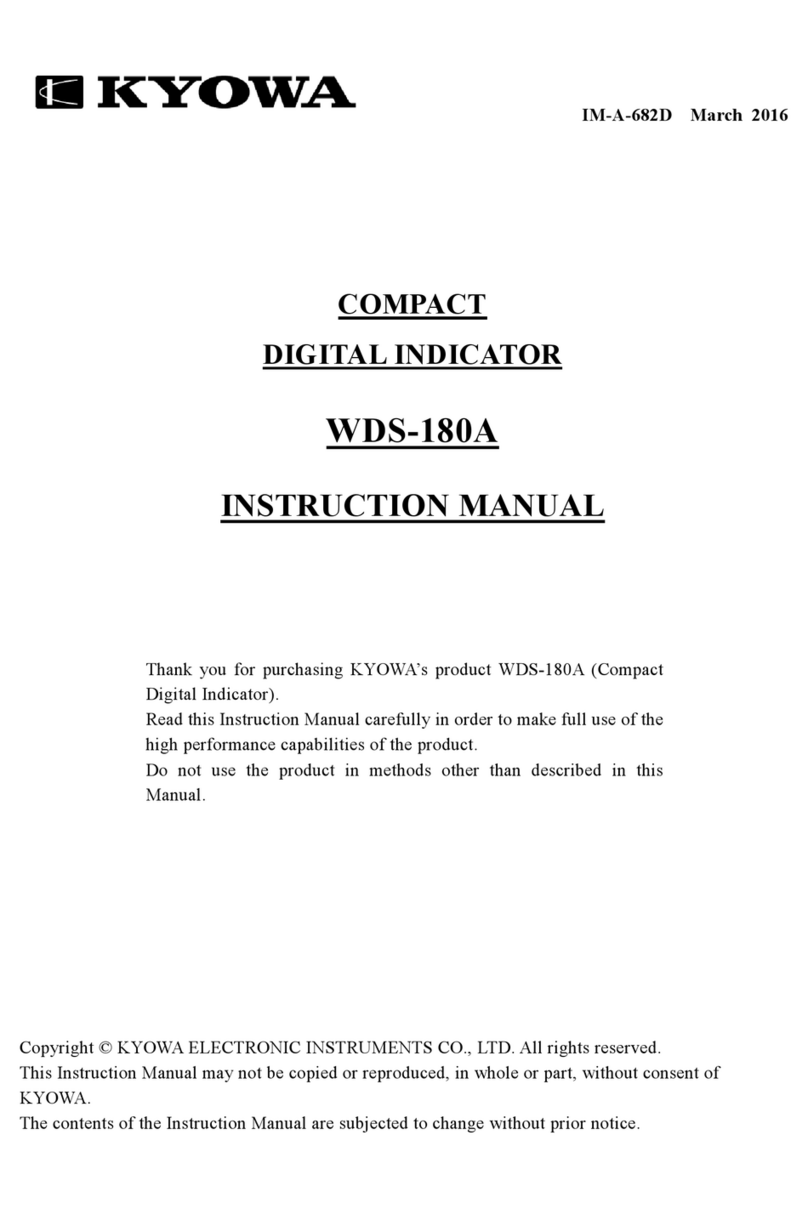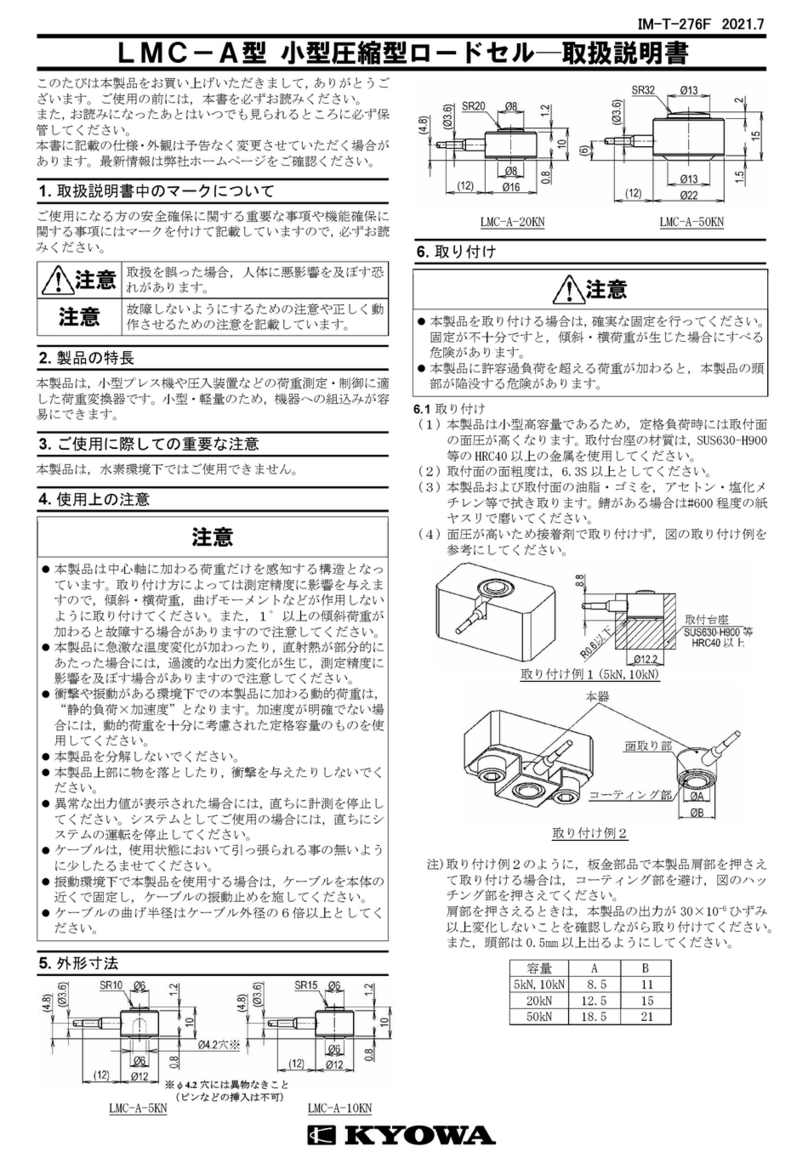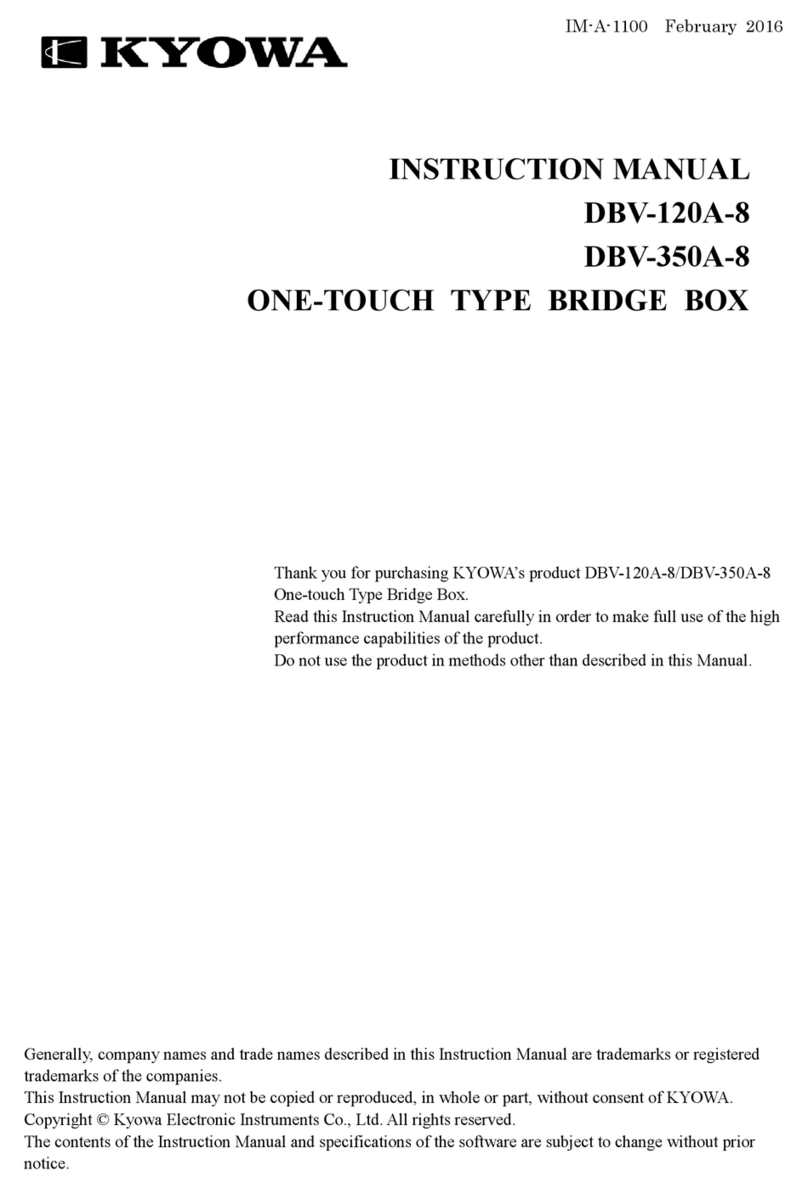
IM-T-101x 2014.6
LMA-A Small Compression Load Cell INSTRUCTION MANUAL
Thank you for purchasing LMA-A Small Compression Load Cell (hereinafter referred to
as the LMA-A). Before using it, please read this instruction manual carefully. Also, keep
the manual within easy reach so that you can refer to it whenever necessary.
1. Calling the operator's attention
The following cautionary symbols and headlines are used to invite the operator's
attention. Be sure to observe the accompanying precautions in order to safeguard the
operator and preserve the performance of the instrument.
Warning
Improper handling may cause serious injury to the
operator. To avoid harm, be sure to observe the
accompanying instructions.
Caution
Cautions are given to invite the operator’s attention, in
order to avoid instrument failure or mal-function. Be
sure to observe the accompanying instructions.
2. Safety precautions
Caution
Avoid water and rain.
The LMA-A
is designed to detect only the load applied to the center axis. Its
installation may directly affect measurement accuracy. Therefore, carefully install
the LMA-A, thereby avoiding a slant load, lateral load, bending moment, etc.
The compensated temperature range of the LMA-A
sufficiently covers daily
atmospheric temperature changes. Partial exposure to direct heat, however, must
be avoided. If not, transient output change may occur resulting in deterioration of
measuring accuracy.
If an ambient temperature unavoidably exceeds the allowable temperature range,
protect the whole LMA-A
with heat insulation material in order to maintain a
temperature within the compensated temperature range.
When impacts or vibrations are app
lied to the direction of a load, the dynamic load
shall be static load × acceleration. If the magnitude of acceleration is not known,
rated capacity should be sufficiently large considering the dynamic load applied on
the LMA-A.
Do not disassemble the LMA-A.
Do not apply shocks to or drop matters on the LMA-A.
Calibrate the LMA-A
once a year or so. (Contact KYOWA or our representative.)
Calibration is necessary whenever the LMA-
A is subjected to an excessive
horizontal force component or an excessive load.
In case abnormal output value is displayed, immediately stop the measurement. If
the LMA-A is used in the system, immediately stop the system operation.
Wire the cable with a little slack not to be pulled during use.
cable in 20N (approx.2kgf).
The LMA-A is in a structure with a strain
gage bonded on the upper diaphragm as
shown in the figure below. Because the
diaphragm is very thin, carefully handle it
to avoid damage.
In vibration environment, fix the cable at its outlet and required portions. Or, t
cable may vibrate due to continuous load and cable may break and cause damage
to the LMA-A.
Make sure that the bending radius of cable is longer than 6 times of a diameter of
3. Mounting
3.1 Dimensional drawing
LMA-A-5N to 50N LMA-A-100N to 1KN
3.2 Use CC-33A adhesive to bond the load cell
(a) Remove grease and dirt from the mounting portion with acetone, methylene
chloride, etc. If any rust, polish with sandpaper grit 120 and the like.
(b) Apply a little drop of CC-33A as shown in the following figure and quickly spread a
thin film on the bonding portion with a match head, etc.
(c) Gently press and hold the LMA-A with fingers,
etc. Since diaphragm is very thin, hold only its
circumference with fingertips and do not press
the center and its vicinity.
(d) When using other adhesive, also observe
precautions.
(e) When removing, insert a keen-edge cutter knife, etc. between the bottom face of
the LMA-A and the cement position.
Warning
Take care not to be hurt with the knives.
Caution
Do not forcedly insert a screwdriver to the circumference of the LMA-
or the mount may come off.
3.3 Providing a mount hole
D
5N to 50N
:
12.2 or higher
100N to 1KN
:
20.2 or higher
3.4 How to use the mounting base
Attach as shown using the optional mounting base CFM.
Mounting method using the CFM-5A Mounting method using the CFM-100A
NOTE:
Cross recessed pan head screw in the figure are included with each
mounting base.
3.5 Measuring object
It is recommended to apply load through metals and rigid materials to have an
accurate measurement.
Rigid substance, metal or the like with
hardness HRC30 to 38
cutter knife to
forcedly insert
a screwdriver
or the mount
may come off.
Strain gages
Diaphragm
Fingertips


























